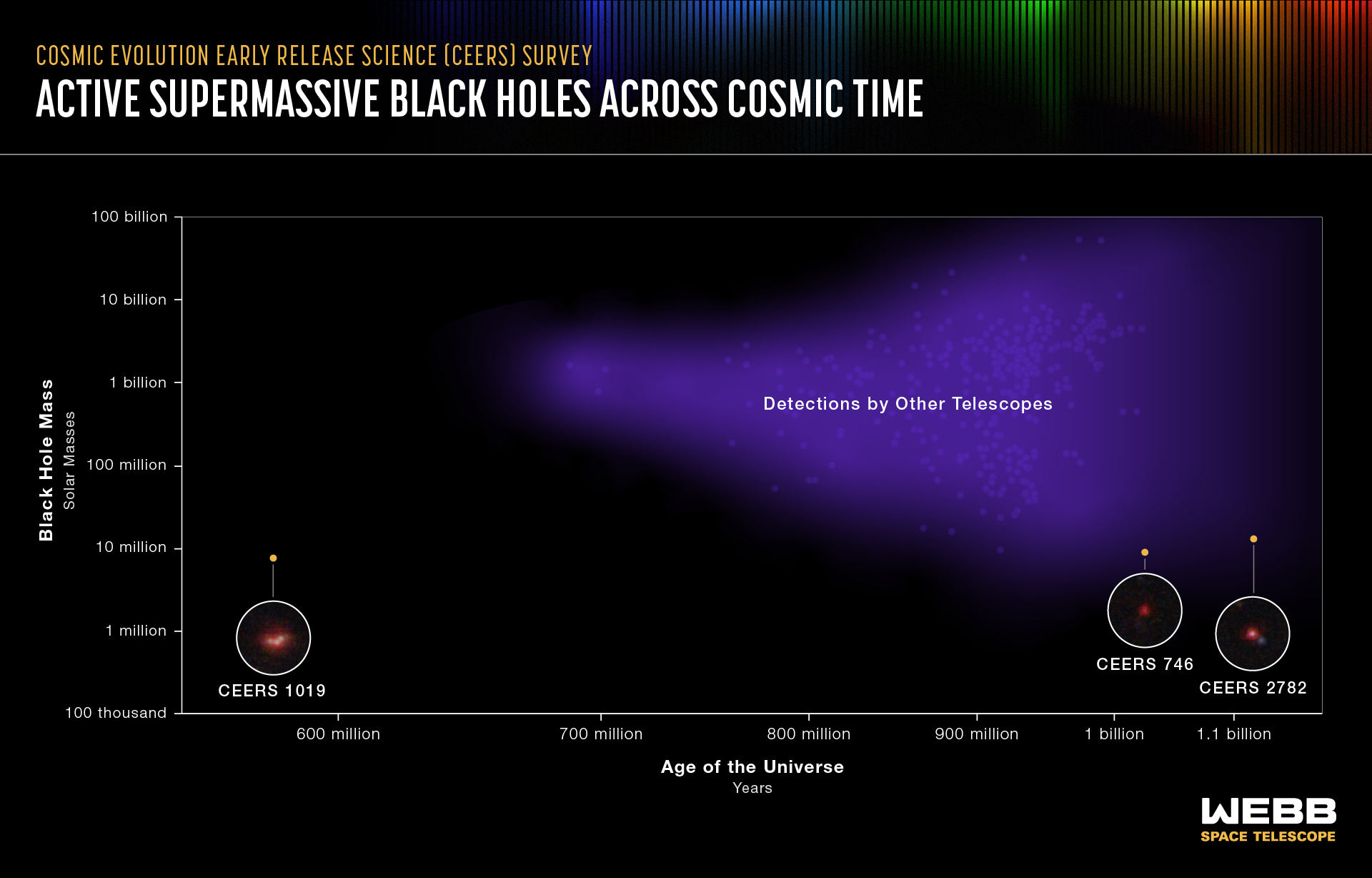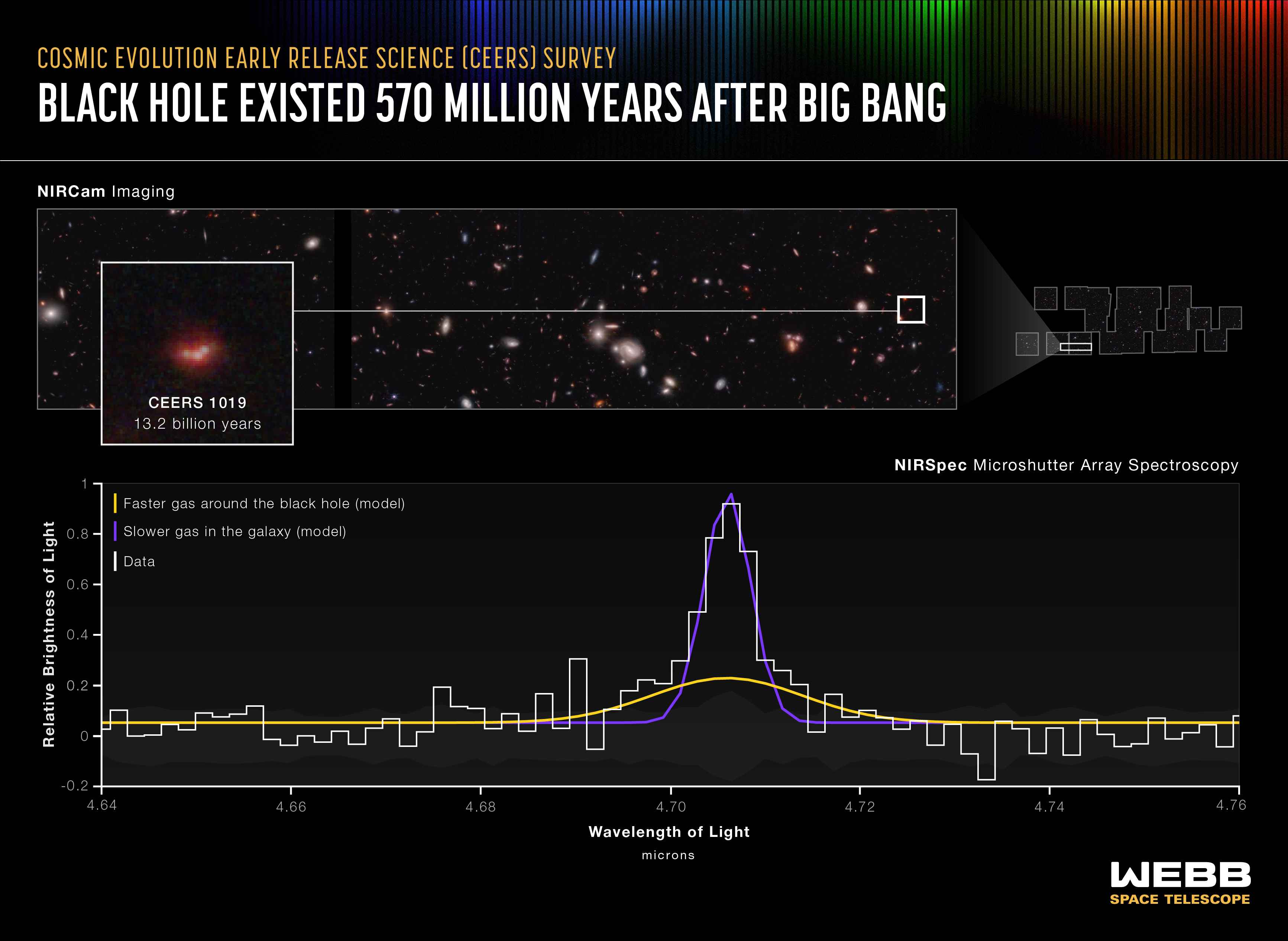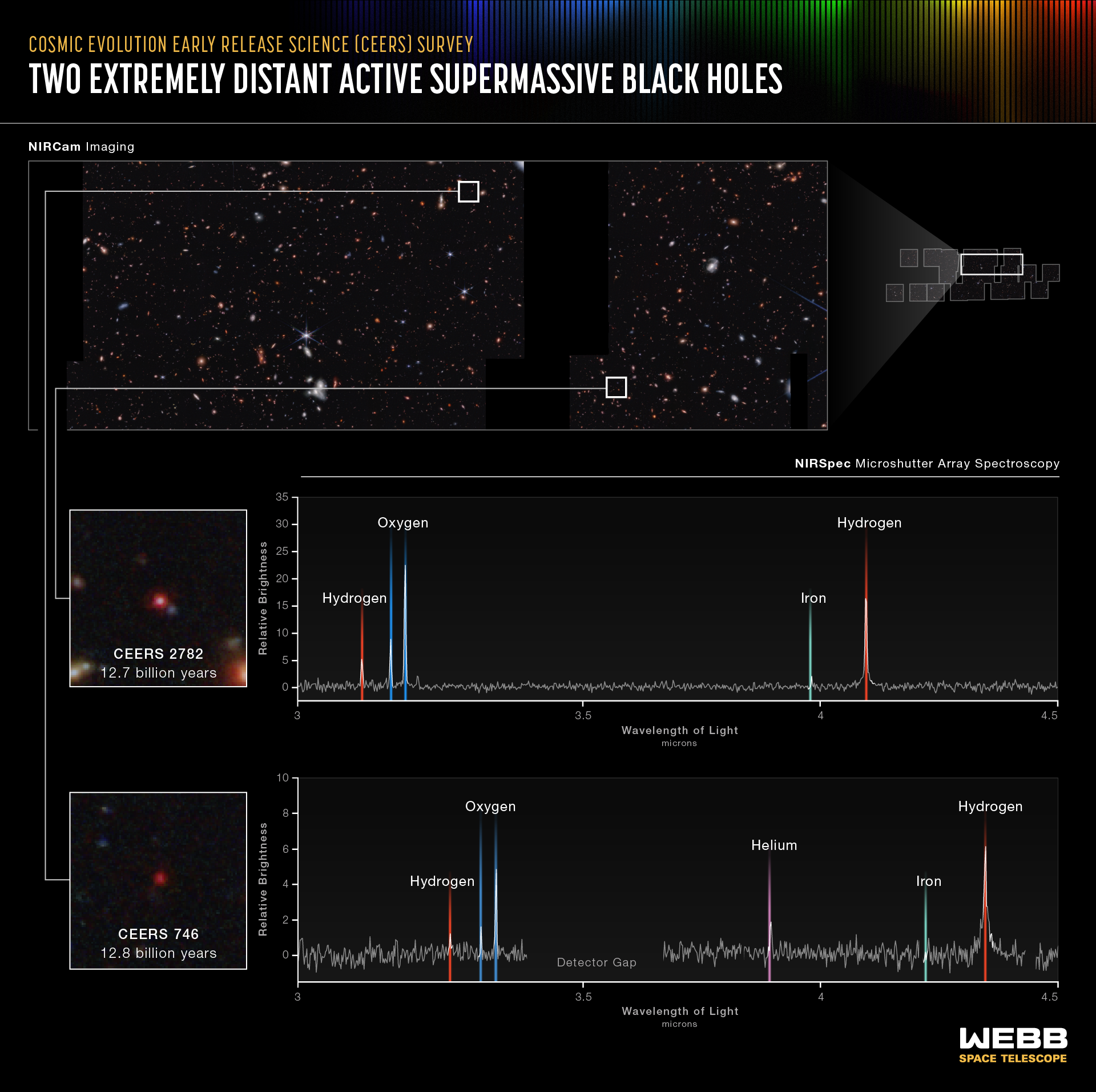
The James Webb Space Telescope (JWST) has detected the most distant active supermassive black hole to date.
The galaxy that hosts the ancient black hole, CEERS 1019, formed fairly early in the universe's history, just 570 million years after the Big Bang. The active supermassive black hole at the center of CEERS 1019 is unusual not only for its age and distance, but also in that it weighs in at just 9 million solar masses, meaning it's 9 million times heftier than the sun. Typically, most supermassive black holes in the early universe weigh in at over 1 billion solar masses, making them brighter and easier to detect.
The relatively small size of the black hole at the center of CEERS 1019 is somewhat of a puzzle. According to a statement from the Space Telescope Science Institute in Baltimore, which manages JWST's science operations, "it is still difficult to explain how it formed so soon after the universe began." Astronomers have long suspected that smaller black holes must have formed in the early days of the universe, but these observations are the first to see them in such detail.
"Researchers have long known that there must be lower-mass black holes in the early universe. Webb is the first observatory that can capture them so clearly," said Dale Kocevski of Colby College in Waterville, Maine who led one of three new studies that used JWST to peer at the distant universe. "Now we think that lower-mass black holes might be all over the place, waiting to be discovered."
Related: James Webb Space Telescope (JWST) — A complete guide
The black hole in CEERS 1019 was discovered using data collected by the James Webb Space Telescope as part of the the Cosmic Evolution Early Release Science (CEERS) Survey, a research program designed to test and validate methods to peer far back into the universe's history in a region of space between the constellations of Ursa Major and Boötes. The data collected for the survey already have astronomers thrilled.
"Until now, research about objects in the early universe was largely theoretical," said Steven Finkelstein, an astronomer at the University of Texas at Austin who leads the CEERS Survey and co-authored one of the studies of CEERS 1019 that used JWST's data. "With Webb, not only can we see black holes and galaxies at extreme distances, we can now start to accurately measure them. That's the tremendous power of this telescope."

JWST was able to collect a wealth of spectral data on CEERS 1019, the electromagnetic signatures that reveal the chemical composition, mass and other properties of the galaxy. The data reveal that the galaxy is actively producing new stars, possibly as the result of a merger with another galaxy that is feeding the activity in CEERS 1019's central black hole.

In addition to detecting the black hole at the center of CEERS 1019, the survey also found two other "lightweights," supermassive black holes with smaller masses than what is typically seen in black holes at that distance.
These two black holes, at the cores of the galaxies CEERS 2782 and CEERS 746, formed 1.1 billion years and 1 billion years after the Big Bang, respectively. Each weighs in at around 10 million solar masses.
For comparison: The black hole at the heart of our own Milky Way galaxy, known as Sagittarius A*, is about 4.3 million times more massive than the sun. But that's quite light for a modern supermassive black hole. The behemoth at the center of the galaxy M87, for example, harbors about 6.5 billion solar masses.

11 galaxies in total have been discovered using JWST's CEERS survey data, galaxies that are thought to have formed between 470 to 675 million years after the Big Bang. The data produced by the study of these galaxies could revolutionize astronomers' understanding of how stars and galaxies formed and evolved throughout cosmic history, researchers said.
"I am overwhelmed by the amount of highly detailed spectra of remote galaxies Webb returned," said Pablo Arrabal Haro of NOIRLab, a lead author of one of the studies using the CEERS survey. "These data are absolutely incredible."
Three separate studies using CEERS Survey data have been accepted for publication in The Astrophysical Journal Letters and are available on the preprint server arXiv.



!["[T]he First and Fifth Amendments Require ICE to Provide Information About the Whereabouts of a Detained Person"](https://images.inkl.com/s3/publisher/cover/212/reason-cover.png?w=600)



